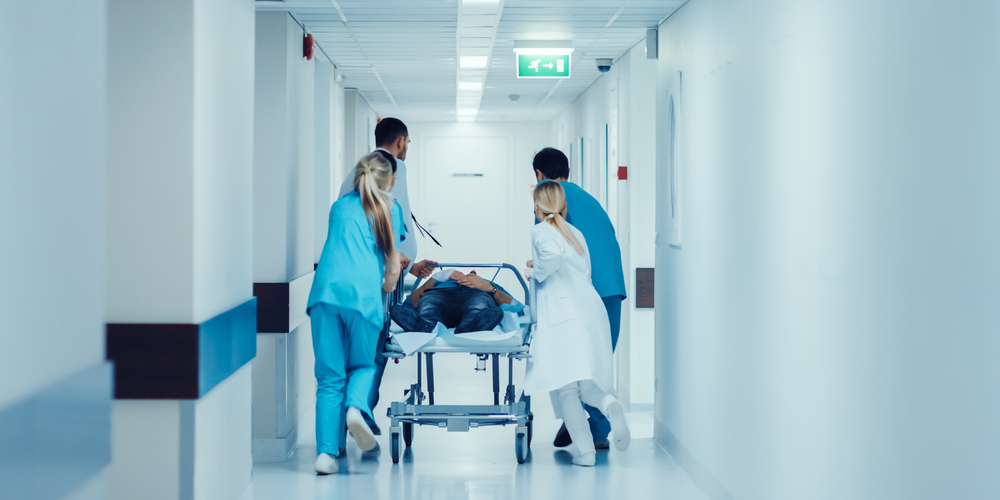
Minor Injuries
The response to an emergency situation depends on what type of medical condition is involved; people involved in minor accidents will usually suffer from shock and minor injuries such as cuts and bruises.
Shock is most effectively treated by means of increasing blood circulation; this can be achieved by elevating the patient’s legs in the air in order to increase blood flow to the brain. Loosening tight clothing and keeping the person warm can also help to combat shock.
Cuts and bruises will usually heal in time but you can help stem any bleeding by applying pressure to the site of the cut; if the cut is particularly deep it may need to be stitched or glued once the patient has been admitted to hospital.
Scolds and burns may be classed as minor injuries but can be extremely serious in some cases; if you come across somebody who has been burnt do not attempt to remove any clothing or material which is stuck to the skin; this will need to be cut away by the emergency services when they arrive on the scene. In order to quell the sensation of burning you should try to apply cold water to the site of the burn or scold as quickly as possible. If scarring is bad laser treatment like laser hair removal can be beneficial.
Diabetes
Emergency first aid may be required in the event of a diabetic person suffering from low blood sugar (hypoglycemia) or high blood sugar (hyperglycemia). Diabetes is a condition which affects the production of insulin, the hormone which controls the levels of sugar in the blood. Hypoglaecemia can cause people to faint, become pale and feel weak; breathing may also become slow and laboured. Hyperglycemia can often result in an increased heart rate and pulse; feeling thirsty and vomiting are also symptoms of high blood sugar.
Hypoglaecemia can usually be treated by raising the level of sugar in the blood; this can often be achieved by giving the person a sugary drink or sweet food and encouraging them to sit down and rest; if symptoms persist they may need to go to hospital.
Hyperglycemia is often more difficult to treat and those suffering from this condition should be admitted to hospital as quickly as possible.
If the casualty loses consciousness you should put them in the recovery position and check their airways, breathing and circulation.
Allergic Reactions
Many allergic reactions are mild and present themselves in the form of a rash on the surface of the skin; these can be easily treated with antihistamine cream or tablets. Some allergies however, can be very dangerous and can result in anaphylactic shock.
In adults this can be treated by placing the individual in a position where it is easy to breathe; it may also be useful to loosen any clothing in order to improve circulation. Many people who have extreme allergies carry a dose of adrenaline around with them; if this is the case you should urge the person to use this medication. If the person’s condition does not improve they may lose consciousness; this can be treated by placing the individual in the recovery position and checking their airways, breathing and circulation.
If the person stops breathing you may need to carry out resuscitation which will involve a sequence of chest compressions and breathing into the person’s mouth. In adults this sequence should normally consist of a series of 30 chest compressions followed by 2 breaths; this should be carried out until emergency medical professionals reach the scene.
In the case of a child going into anaphylactic shock and losing consciousness, resuscitation will need to be given. In contrast to adults, the compressions should be slightly lighter. Initially, 5 breaths should be given and then the sequence of 30 compressions and 2 breaths remains the same. In babies the compressions will need to be lighter still.
Heart Attacks
People who are having a heart attack commonly feel a sharp pain in their chest; other symptoms often include an irregular or jumpy pulse rate, feelings of breathlessness and difficulty with breathing. Emergency help should be sought as quickly as possible in the event of a heart attack; while you are waiting, it may be beneficial to place the patient in a seated position with their legs bent at the knee. If the casualty loses consciousness you should be prepared to place them in the recovery position and carry out resuscitation.
Major accidents
One of the most important things to remember when attending the scene of an accident is to secure the surrounding area; this may include placing warning signs if the incident has occurred on a road for example. The emergency services should be called immediately. If there are many casualties it is important to attend to any that are still or quiet first; this will often signify that they are unconscious. If the casualty is trapped you should seek assistance from trained professionals; it may be detrimental to try and move them, particularly if they have a head, neck or back injury.
If somebody is unconscious they should be placed in the recovery position and resuscitated using a series of chest compressions and breaths. Once the casualty is in the recovery position their airways should be opened and breathing checked before the resuscitation process begins; if there is an obstruction to the airway, this should be removed as quickly as possible.
Casualties who have broken bones should be kept still until the emergency services arrive; moving them may cause further harm. Bleeding can usually be stemmed by applying pressure to the surrounding area.